Vinyl Record vs. Flac: Which Sounds Better?
The latest and greatest in audio technology? Custom vinyl records, brought to you by Freestyle Vinyl. How does it compare to other audio options? Read on below...
When it comes to audio quality, the battle between vinyl records and digital formats like Flac (Free Lossless Audio Codec) has sparked much debate among music enthusiasts. Vinyl records have long been cherished for their warm, analog sound, while Flac files offer the convenience and lossless compression of digital audio. In this article, we will compare the sound quality of vinyl records and Flac files, exploring their respective strengths and helping to determine (as much as we are able!) which format ultimately delivers a superior listening experience.
Understanding Flac and Other Digital Audio Formats
Flac is a lossless audio codec that allows for bit-perfect preservation of audio quality. It offers a higher level of audio fidelity compared to compressed formats like MP3 or M4A. Unlike those formats, which discard certain audio data to reduce file size, Flac retains all the audio information from the original source.
Among the popular digital audio choices are MP3, M4A, WAV, and FLAC. Each format offers unique benefits and drawbacks that influence their usability and audio quality. In this article, we delve into the characteristics of these formats to help you understand their strengths and limitations.
- MP3 (MPEG Audio Layer-3): MP3 is perhaps the most recognizable audio format, renowned for its widespread usage. It’s benefits include that it is widely supported with extensive compatibility across devices and softwares, meaning you can play it pretty much anywhere. It also achieves significantly reduced file sizes while maintaining reasonable audio quality. However, MP3 relies on lossy compression, resulting in a compromise between file size and audio quality. Listeners may notice a loss of detail and clarity compared to lossless formats. At lower bitrates, MP3 files exhibit perceptible degradation in audio fidelity, lacking the full dynamic range and subtle nuances found in lossless formats. And finally, MP3 files have limited capacity for embedded metadata, which restricts detailed track information and album artwork display.
- M4A (MPEG-4 Audio): M4A, developed by Apple, serves as an alternative to MP3 with its own distinct advantages: M4A supports advanced audio encoding, such as Advanced Audio Coding (AAC), enabling superior sound quality compared to MP3, particularly at lower bitrates. M4A's compression algorithms strike a balance between audio quality and file size, resulting in smaller files while preserving satisfactory audio fidelity, and accommodate extensive metadata, facilitating the storage and display of detailed information about the audio content. However, although M4A finds widespread support in Apple devices and software, its compatibility with non-Apple platforms may be less comprehensive, potentially posing limitations for users outside the Apple ecosystem.
- WAV (Waveform Audio File Format): WAV, renowned for its uncompressed nature, is favored by professionals and audiophiles alike. WAV files retain the audio data in its original, uncompressed form, ensuring maximum audio fidelity and accuracy, and are widely supported across devices and software, making them accessible for playback and editing in numerous applications. With its lossless nature, WAV is commonly employed in professional audio production, mastering, and archiving, preserving the audio in its purest form. As an uncompressed format, WAV files are significantly larger compared to their compressed counterparts. This poses challenges when it comes to storage, sharing, and streaming, as they require more bandwidth and disk space. Also, similar to MP3, WAV files have limited support for embedded metadata, which may restrict the availability of detailed track information.
- FLAC (Free Lossless Audio Codec): FLAC stands out as a popular lossless audio format, offering a balance between audio quality and file size. FLAC employs lossless compression algorithms, resulting in audio files that are identical to the original source, ensuring no loss of audio quality. FLAC captures the full dynamic range and subtleties of the original recording, making it an excellent choice for audiophiles and music enthusiasts, and also supports comprehensive metadata, allowing for detailed track information and album artwork display. While smaller than WAV files, FLAC files are still larger than their lossy counterparts like MP3 and M4A. Consequently, they require more storage space and bandwidth for transmission and distribution. And although FLAC support has been increasing, it may not be as universally compatible with all devices and software as more common formats like MP3 or M4A.
Ultimately, the choice of format depends on your specific requirements, playback devices, and the importance you place on audio fidelity and file size.
Vinyl Sound Quality vs. Flac
Vinyl records and Flac files present distinct characteristics in terms of sound quality:
- Vinyl Sound Quality: Vinyl records are praised for their warm, rich sound that is often described as having a unique "analog" feel. The analog nature of vinyl playback produces subtle imperfections, such as surface noise and slight variations in frequency response, which some listeners find adds to the overall listening experience (and other listeners may argue takes away from their preferred listening experience). Vinyl enthusiasts appreciate the natural, organic sound reproduction that captures the original recording in a way that digital formats cannot fully replicate.
Most modern vinyl records are created from digital source files. Given the transition from digital to analog formats, one may describe the vinyl record sound as having lost certain elements of the digital file. Stereo effects, certain trebles, and other audio elements may be lost, resulting in that “warm”, analog sound that vinyl record enthusiasts know and love.
- Flac Sound Quality: Flac files, being lossless, offer audio quality that is nearly identical to the original source material. They provide a clean, detailed sound reproduction with no loss of data. Flac files are capable of capturing the nuances, dynamics, and intricacies of the music, making them a preferred choice for audiophiles who prioritize accuracy and clarity in their listening experience.
Comparison of Vinyl and Flac Sound
The sound quality comparison between vinyl records and Flac files depends on several factors:
- Source Quality: The quality of the original recording significantly influences both vinyl and Flac sound. A well-mastered recording can sound exceptional in either format, while a poorly mastered recording will exhibit flaws regardless of the medium. It is important to note that custom vinyl records are directly impacted by the quality of the digital audio file used to create them. A high-quality Flac source will result in a better-sounding custom vinyl record.
- Sound Character: Vinyl records have a distinct sonic character that adds warmth and depth to the sound. The vinyl playback process introduces subtle distortions and imperfections, often referred to as "vinyl sound," which some listeners find pleasing. Flac files, on the other hand, offer a more accurate and precise sound representation, faithfully reproducing the original recording without any added coloration.
- Playback Equipment: The quality of the playback equipment, including turntables, cartridges, amplifiers, and speakers, greatly affects the sound output of vinyl records. A high-quality vinyl setup can maximize the potential of vinyl sound, whereas a subpar setup can introduce additional noise or degradation. Flac files, on the other hand, require a high-resolution digital-to-analog converter (DAC) and quality audio equipment to achieve the best possible sound reproduction. You can’t get a great flac sound on your phone!
Is Vinyl Better than Flac?
The question of whether vinyl is better than Flac or vice versa is subjective and ultimately depends on personal preferences. Vinyl offers a unique listening experience characterized by its analog sound and tactile nature, appealing to those who value nostalgia and the physicality of music. Flac files, on the other hand, provide pristine audio quality and convenience for digital music libraries.
In the end, the choice between vinyl and Flac comes down to individual preference and priorities. Some listeners may favor the warmth and character of vinyl, while others prioritize the accuracy and convenience of digital formats like Flac. Ultimately, both formats have their merits and can provide an enjoyable listening experience.
The debate of vinyl vs. Flac is a matter of personal preference and the listening experience one seeks. Vinyl records offer a unique analog sound with their warm characteristics and physicality, while Flac files provide lossless compression and accurate sound reproduction. Understanding the strengths and qualities of each format allows music enthusiasts to make informed decisions based on their preferences and priorities. Whether you choose vinyl or Flac, both formats can provide an immersive and enjoyable way to experience music.




